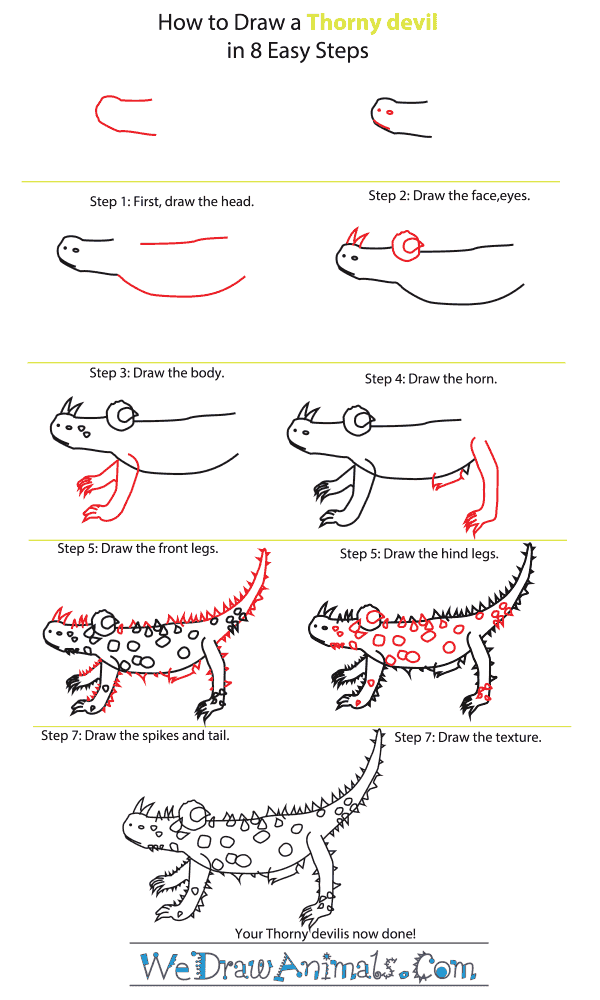In this quick tutorial you'll learn how to draw a Thorny Devil in 8 easy steps - great for kids and novice artists.
The images above represent how your finished drawing is going to look and the steps involved.
Below are the individual steps - you can click on each one for a High Resolution printable PDF version.
At the bottom you can read some interesting facts about the Thorny Devil.
Make sure you also check out any of the hundreds of drawing tutorials grouped by category.
How to Draw a Thorny Devil - Step-by-Step Tutorial
Step 1: Let's begin our thorny devil - otherwise known as the mountain devil - by drawing the head. Just make a line that curves right.
Step 2: Simply draw two circles and a line for the facial features.
Step 3: Now you can draw the body by connecting a line to the bottom of the neck, and another at the top while leaving a space for the lizard's false head.
Step 4: Now let's draw two pointed horns on his head, and one circle around another circle for his false head. This he uses to trick his predators!
Step 5: Okay, let's draw his front legs. Draw the front left by making the line start from higher up on the body, and then draw some very pointy claws.
Step 6: Now you can draw the hind legs. Remember the back right leg is barely visible.
Step 7: A thorny dragon needs its thorns! Draw as many as you want on his body - the more, the better!
Step 8: Finally, draw the bumpy, spiky texture by adding dots on the body.
Interesting Facts about the THORNY DEVIL
The Thorny Devil is a member of the reptile family and the scientific term for them is Moloch horridus. The name Moloch comes from the cultural deity of demonology that is referred to as the Fallen Angel or the Prince of Hell. Other common names for this species are the Horny Dragon, Mountain Devil, Thorny Lizard, and Moloch. They are native to Australian deserts and are covered in spines to various shades of brown.
Did you know?
- The animal was first documented in 1841.
- This species can live up to 20 years old.
- The proper name comes from the 2 large horns on its forehead.
- The creature can bury eggs almost 2.5 feet underground.
- They can grow up to 8 inches.
They have a fake head on the back of their neck which is exposed after they tuck their real head under during a threat, so that the predator doesn’t damage their brain. Another method of evading predators is to pretend that they are a leaf blowing in the wind, by rocking side by side. This species is related to the North American Horned Lizard which has less spikes on its body. These have a ridged body that can incline to channel water to their mouth during the collection of dew in the morning.









